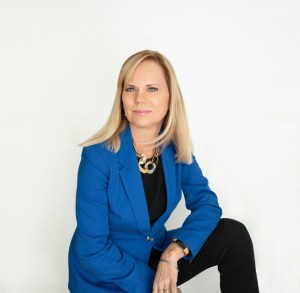Published September 26, 2022 • 5 Min Read
Bruce Topping has been buzzing about his passion for beekeeping for years – but it’s an interest he didn’t have time to nurture while he worked as a floor supervisor at Casino Rama. Now that he’s retired, he can do what he loves — from raising honeybees to spending time on his boat and cruising on his motorcycle.
But he didn’t get to this point without some retirement planning and preparation. In a recent episode of Go To Grandma, he shares the value he places on planning and professional advice and the importance of regularly checking in with his retirement plan.

Check out Take 5 With RBC at the 20:00 mark of the Go-To Grandma episode “NEW: BORN” to hear more from Topping.
In the meantime, here are three retirement planning steps to take to help you prepare for — and enjoy — a fulfilling second act of your own.
1. Identify your sources of retirement income
While your Registered Retirement Savings Plan (RRSP) might be the cornerstone of your retirement savings strategy, there are other sources of income to tap into during retirement. When you can identify what will contribute to your total retirement paycheque, you’ll be in a better position to know how much money you will have and plan out your second act accordingly.
Here are the most common sources of retirement income:
Government retirement benefits
Government benefits tend to replace about 30%-40% of your pre-retirement income and represent a secure source of retirement income that will last your lifetime. They’ll also increase over time to match the rising cost of goods and services. Benefits may include:
-
Canada/Quebec Pension Plan (CPP/QPP): If you work and contribute to either CPP or QPP, you will be entitled to receive pension benefits under these plans.
-
Old Age Security (OAS): This is a pension you can receive if you are 65+ and have lived in Canada for at least 10 years — regardless of if you’ve worked.
-
Guaranteed Income Supplement (GIS): A monthly non-taxable benefit payable to low-income Canadian residents.
Employee pension plans
If you contributed to a company pension plan during your working years, you might be entitled to receive pension income from your employer. The two most popular types of plans are Defined Benefit plans and Defined Contribution plans.
A Registered Retirement Savings Plan (RRSP)
If you’ve been saving for retirement in an RRSP, these savings will become valuable income when you retire. By December 31 of the year you turn 71, you’ll need to convert your RRSP to an income option, such as a Registered Retirement Income Fund (RRIF) or annuity — whether you need the income or not.
Other savings and investments
If you’ve set aside money in a Tax-Free Savings Account (TFSA) or invested in GICs or mutual funds, the money in these accounts can serve as income when you need it. At the same time, consider any rental income you may earn and equity in your home you might leverage — a reverse mortgage, for example, may help boost your income and preserve your other investments.
2. Meet with a financial professional
Knowing where you stand financially is fundamental to your retirement. Understanding how much money you’ll need to retire, how to invest your savings and how to withdraw them tax-efficiently are all planning insights a financial professional can help with.
“In retirement, my financial situation is very important,” says Topping during his conversation with Go-To Grandma host Kathy Buckworth. “RBC kept me on top of where to put my investments and how much I would need to retire.”
By planning with his financial professional, Topping was able to turn his beekeeping dream into reality. “I sat down with an advisor and set up a working plan to set aside money for my retirement,” he says. “When I was financially stable, I could do the things I wanted to do.”
And Topping is far from alone. Research for more than 15 years shows investors who worked with an advisor have almost four times the assets of investors who didn’t.1 “It’s best to leave [retirement planning] to the professionals,” says Topping. “Unless you’re a professional advisor yourself, you should sit down with someone that can help you out and discuss what your plans are [and] where you want to go in the future.”
3. Revisit your financial plan regularly
Life can change quickly, and your goals and priorities will undoubtedly shift along the way. That’s why you want your retirement plan to be flexible and adaptable to your lifestyle at every stage. Revisiting your retirement plan regularly — both before you retire and once you’re living in retirement — can help ensure your plan reflects your financial picture as well as your short- and long-term goals.
“Because everything is always changing, I’m in contact with my RBC Advisor regularly. We discuss what’s happening in my life and my financial position every six months, just to make sure things are on track,” says Topping.
When Bruce Topping can spend a day tending to his bees and getting out on the water, he calls it “another day in paradise.” For a retirement that’s abundant with days filled with the things you love to do, planning now can help you get there tomorrow.

It’s Never Too Early – or Too Late – to Plan
Whether you’re still working and need a better savings strategy or you’re retired and want to fine-tune an existing plan, take a step in the right direction today.
This article is intended as general information only and is not to be relied upon as constituting legal, financial or other professional advice. A professional advisor should be consulted regarding your specific situation. Information presented is believed to be factual and up-to-date but we do not guarantee its accuracy and it should not be regarded as a complete analysis of the subjects discussed. All expressions of opinion reflect the judgment of the authors as of the date of publication and are subject to change. No endorsement of any third parties or their advice, opinions, information, products or services is expressly given or implied by Royal Bank of Canada or any of its affiliates.
Share This Article






